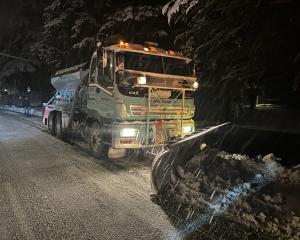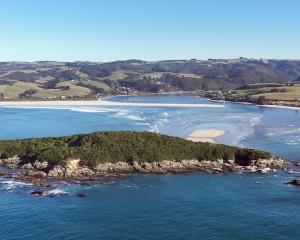That was one of the questions pondered at an energy seminar in Dunedin yesterday.
Solid Energy wants to build a small plant near Mataura to turn lignite into higher-grade fuel briquettes. Solid Energy and other companies are also investigating lignite-to-diesel and lignite-to-nitrogen fertiliser conversion plants.
Parliamentary Commissioner for the Environment Dr Jan Wright, who is is already on record as opposing the use of lignite, said at the forum lignite had been described as having "the energy content of cow dung" and unacceptably large amounts of climate-warming carbon could be emitted from lignite conversion plants.
New Zealand was on track to miss its Copenhagen greenhouse gas reduction pledge "by a country mile", she said.
"Instead of [being] below, we are expected to be 30% above 1990 levels. That's a gap of about 27 million tonnes of CO2 equivalent a year."
The lignite-to-diesel plant planned by Solid Energy would increase the size of the gap by 20%, she said, with the gap increasing to 50% if a second lignite-to-diesel plant planned by L and M Mining went ahead.
"Yes, we can buy carbon credits offshore to make up the difference. But being so dependent on carbon reductions in other countries is a poor look for a country that brands itself internationally as clean and green." Dr Wright said.
Carbon was being captured at some large plants overseas and either "scrubbed" free of carbon or stored in liquid or solid state.
Dr Wright said she "really hoped" the world could get carbon capture and storage to work but had been told the stream of carbon dioxide was not easy to capture when coal was burned to generate electricity.
Technology such as "gasification" of lignite, tar removal systems and carbon scrubbing was advancing so quickly conversion plants built in Southland would have greatly reduced or negative carbon emissions, Coal Research Ltd chief executive Dr Rob Whitney said.
Dr Whitney, who heads a World Energy Council project looking at energy demand through to 2050, said demand for diesel and other fuels was growing and would continue to grow, fed mainly by the increasing needs of China, India and Africa.
After his presentation, he told the Otago Daily Times he expected low-carbon or zero-carbon lignite conversion technology would become "reasonably economic" in this country within 10 to 20 years and he expected it would be at least 10 years before a lignite conversion plant was built in Southland.
New Zealand could not ignore a lignite resource "in order of magnitude of the Maui gasfield", he said.
"If New Zealand doesn't use it, someone else will."
The seminar was the first of the series organised by the National Energy Research Institute.
About 70 participants had been expected but about half of them, including five speakers, were unable to get to Dunedin after flights were cancelled because of volcanic ash cloud.











